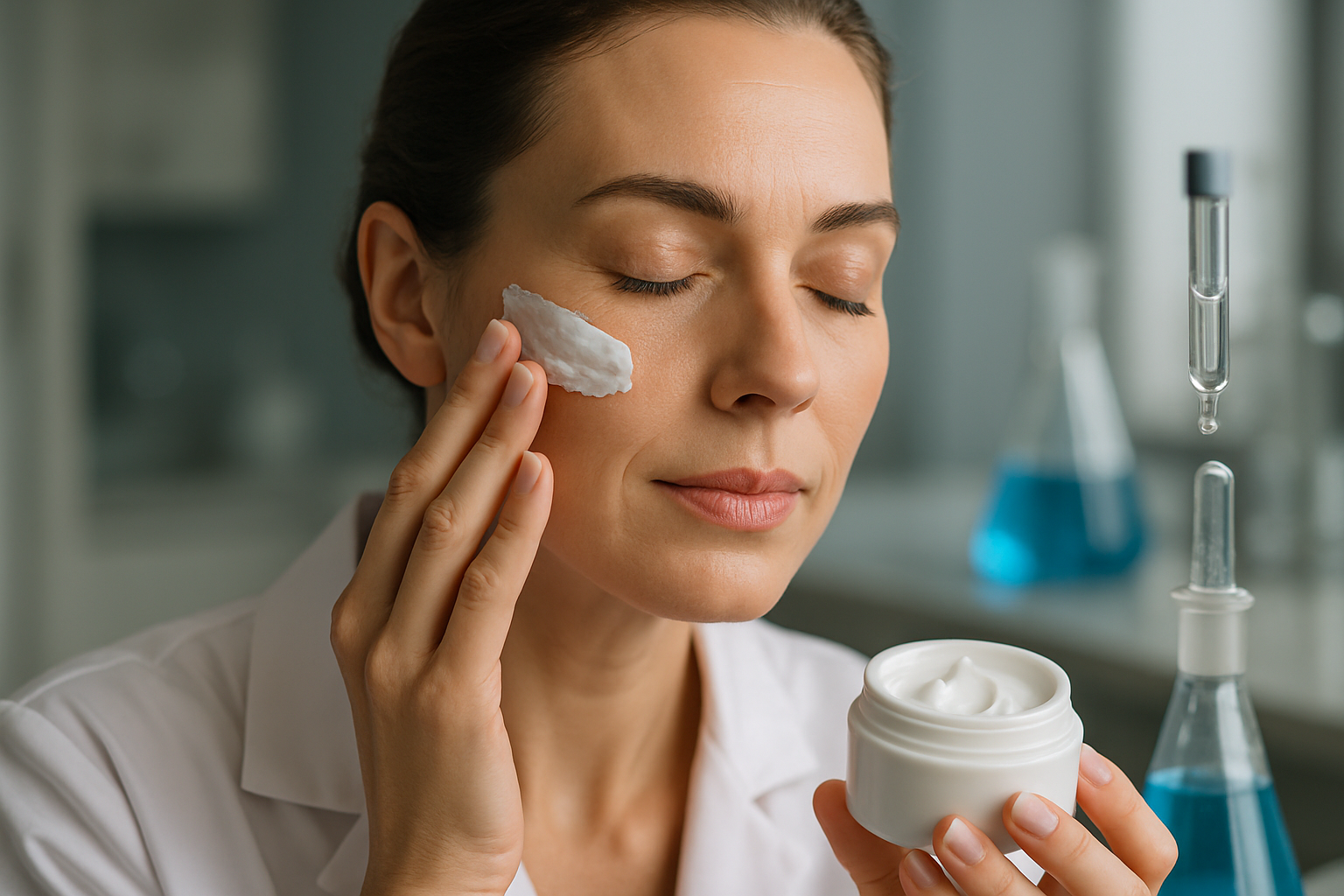Understanding Vitamin C Serum Benefits for Different Skin Types
Vitamin C serums for skin are used to support a skincare routine and overall skin health. Understanding different formulations, ingredients, and usage tips can help individuals make informed choices that fit their daily care habits while keeping skin care practical and balanced.

Vitamin C serum has established itself as a cornerstone in modern skincare regimens, prized for its ability to brighten complexion, fight free radical damage, and support collagen production. This powerful antioxidant comes in various formulations designed to address specific skin concerns and accommodate different skin types. Understanding how these serums work and selecting the right formula can make a significant difference in achieving desired skincare results.
How Vitamin C Serums Work for Sensitive Skin Types
People with sensitive skin often hesitate to incorporate active ingredients into their skincare routine, fearing irritation or adverse reactions. However, specially formulated vitamin C serums can provide benefits without the typical stinging or redness. These gentle formulations typically use derivatives like sodium ascorbyl phosphate or magnesium ascorbyl phosphate rather than pure L-ascorbic acid. These derivatives are less acidic, making them less likely to trigger sensitivity while still delivering antioxidant protection.
The ideal vitamin C serum for sensitive skin typically contains a lower concentration (5-10%) compared to regular formulations. Additionally, these serums often exclude potential irritants like artificial fragrances, alcohol, and essential oils. Many sensitive skin formulas incorporate soothing ingredients like aloe vera, centella asiatica, or chamomile to further minimize potential irritation while maximizing skin tolerance.
The Science Behind Brightening Vitamin C Face Serums
The brightening effects of vitamin C serums stem from their ability to inhibit tyrosinase, an enzyme involved in melanin production. By interrupting this process, vitamin C helps fade hyperpigmentation, sun spots, and post-inflammatory marks, resulting in a more even skin tone. The most effective brightening formulations typically contain L-ascorbic acid at concentrations between 10-20%, which research has shown to be most effective for pigmentation concerns.
For enhanced brightening effects, many formulations combine vitamin C with complementary ingredients like niacinamide, alpha arbutin, or licorice root extract. These ingredients work synergistically to target different aspects of the pigmentation process. Regular application of these brightening serums can show visible results within 4-12 weeks, depending on the formulation strength and consistency of use. For optimal results, brightening vitamin C serums should be applied in the morning and followed with sunscreen, as UV exposure can counteract their benefits.
Benefits of Combining Vitamin C Serum with Hyaluronic Acid
The pairing of vitamin C with hyaluronic acid creates a powerhouse combination that addresses multiple skin concerns simultaneously. While vitamin C provides antioxidant protection and brightening benefits, hyaluronic acid delivers intense hydration by attracting and holding up to 1,000 times its weight in water. This molecular combination helps maintain skin barrier function while delivering anti-aging benefits.
Hyaluronic acid comes in different molecular weights, with lower weights penetrating deeper into the skin and higher weights providing surface hydration. Many advanced formulations incorporate multiple molecular weights to address hydration at different skin levels. The moisture-binding properties of hyaluronic acid also help buffer potential irritation from vitamin C, making these combination products potentially more tolerable for those with sensitive or reactive skin.
When these ingredients are formulated together, they create a synergistic effect that enhances overall skin appearance. The hydration from hyaluronic acid plumps the skin, minimizing the appearance of fine lines, while vitamin C works to brighten and protect. This combination is particularly beneficial for those with dehydrated skin showing signs of aging and uneven tone.
Proper Application and Storage of Vitamin C Serums
The effectiveness of vitamin C serums depends significantly on proper application and storage. Vitamin C is notoriously unstable and can oxidize when exposed to air, heat, and light, rendering it less effective or potentially irritating. Quality vitamin C serums typically come in dark or opaque bottles with dropper applicators to minimize exposure to these elements.
For optimal results, apply vitamin C serum to clean, dry skin before heavier products like moisturizers and sunscreens. Most dermatologists recommend morning application to maximize the antioxidant protection throughout the day, though some formulations can be used both morning and evening. When introducing a new vitamin C serum, start with every other day application to allow skin to acclimate, especially if you have sensitive skin or are using a higher concentration.
Proper storage is equally important for maintaining potency. Keep the serum in a cool, dark place—some even recommend refrigeration—and always tightly close the bottle after use. A vitamin C serum that has oxidized will typically turn yellow or brown and may develop an unusual smell, indicating it’s time for replacement.
Choosing the Right Vitamin C Serum for Your Skin Needs
Selecting the appropriate vitamin C serum requires understanding both your skin type and the specific concerns you want to address. For those with oily or acne-prone skin, water-based or gel formulations with L-ascorbic acid may be most suitable. Dry or mature skin types often benefit from more emollient serums containing vitamin E and ferulic acid alongside vitamin C, which enhance stability and effectiveness.
Concentration is another important consideration. Beginners or those with sensitive skin should start with lower concentrations (5-10%), while those with resilient skin seeking more dramatic results might tolerate 15-20% formulations. The pH of the product also matters—L-ascorbic acid works most effectively at a pH of 3.5 or lower, though this acidity may cause irritation for some users.
When evaluating products, look beyond marketing claims to the ingredient list. The vitamin C should appear near the top of the ingredients list, and the packaging should be designed to protect stability. Quality formulations will often include additional antioxidants and stabilizers to enhance both efficacy and shelf life.
Long-term Effects and Expectations from Regular Use
Consistent use of vitamin C serum can yield impressive long-term benefits beyond the immediate brightening and hydrating effects. Regular application helps strengthen the skin barrier, increase collagen production, and provide cumulative protection against environmental damage. Studies have shown that vitamin C can help prevent and treat UV-induced damage, though it should never replace sunscreen.
Most users notice improved skin texture and tone within 2-4 weeks of regular use, with more significant changes in hyperpigmentation and fine lines becoming apparent after 8-12 weeks. The timeline varies based on individual skin condition, product formulation, and consistency of application. For maintenance, continued use is necessary as the benefits of vitamin C are not permanent without ongoing treatment.
Long-term users often report a general improvement in skin resilience and a reduction in the formation of new pigmentation spots. When incorporated into a comprehensive skincare routine that includes proper cleansing, moisturizing, and sun protection, vitamin C serums can significantly contribute to healthier, more youthful-looking skin over time.
This article is for informational purposes only and should not be considered medical advice. Please consult a qualified healthcare professional for personalized guidance and treatment.



